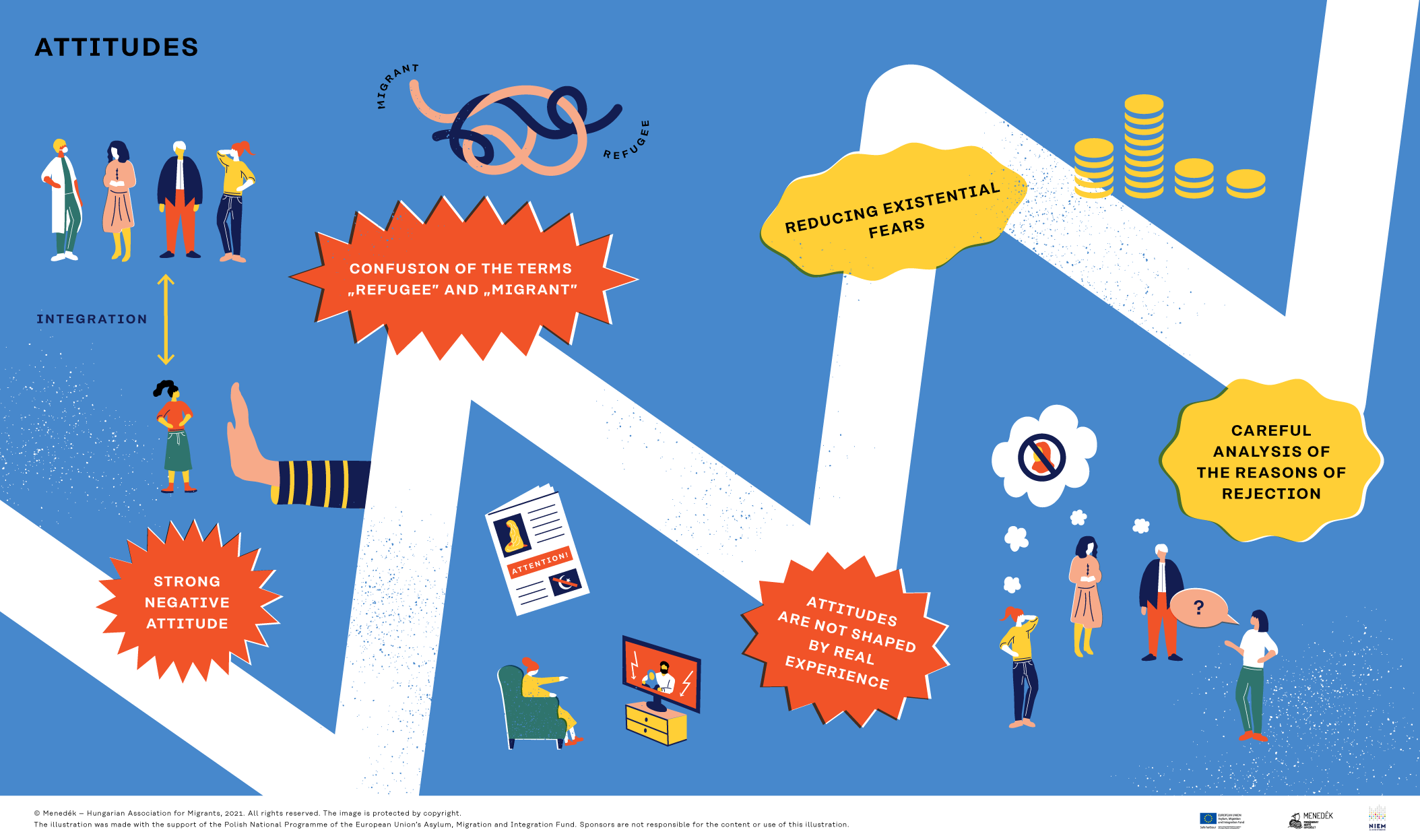
Integration is a two-way process that requires effort from both the individual and the host society. After all, it is in vain for someone to be ready to integrate if the receiving environment does not support them in this.
This analysis was carried out mainly on the basis of the European Social Survey, supplemented in some places by the results of the Pew Research Center and TÁRKI. In general, until 2014, the whole of Europe was characterized by a positive change in attitudes, but this has changed radically as a result of the refugee crisis. In 2016, Hungary became the second most hostile country among those who participated in the survey in all three surveyed years (2002, 2014, 2016).
Negative attitudes towards refugees in Hungary are strongly correlated with the rejection of immigration, so in Hungarian society the rejection attitude towards both refugees and immigrants for other reasons is strong. This suggests that the concept of “refugee” and “migrant” has become blurred for many in Hungary as a result of the refugee crisis and the accompanying governmental communication.
Attitudes towards immigrants and refugees shifted negatively for all social groups surveyed. The 31-50 age group is the most hostile. Those with higher education and those living in the suburban settlement are the least hostile. The most rejecting are those with no more than a secondary education, living in large towns or small villages or on farms. Those with work have a higher rejection rate than non-workers, so fears of losing their jobs may play a role.
At the same time, it is important to emphasize that the attitude is mostly shaped by unrealistic, non-personal experiences, as in international comparison (and also in absolute terms) there are very few recognized refugees and beneficiaries of subsidiary protection living in Hungary.
In the future, it would be worthwhile to place more emphasis on monitoring the attitude towards refugees and protected persons, and to explore the reasons in more detail. At the same time, surveying and monitoring the attitudes of immigrants and refugees could contribute to a complex understanding of the subject.
